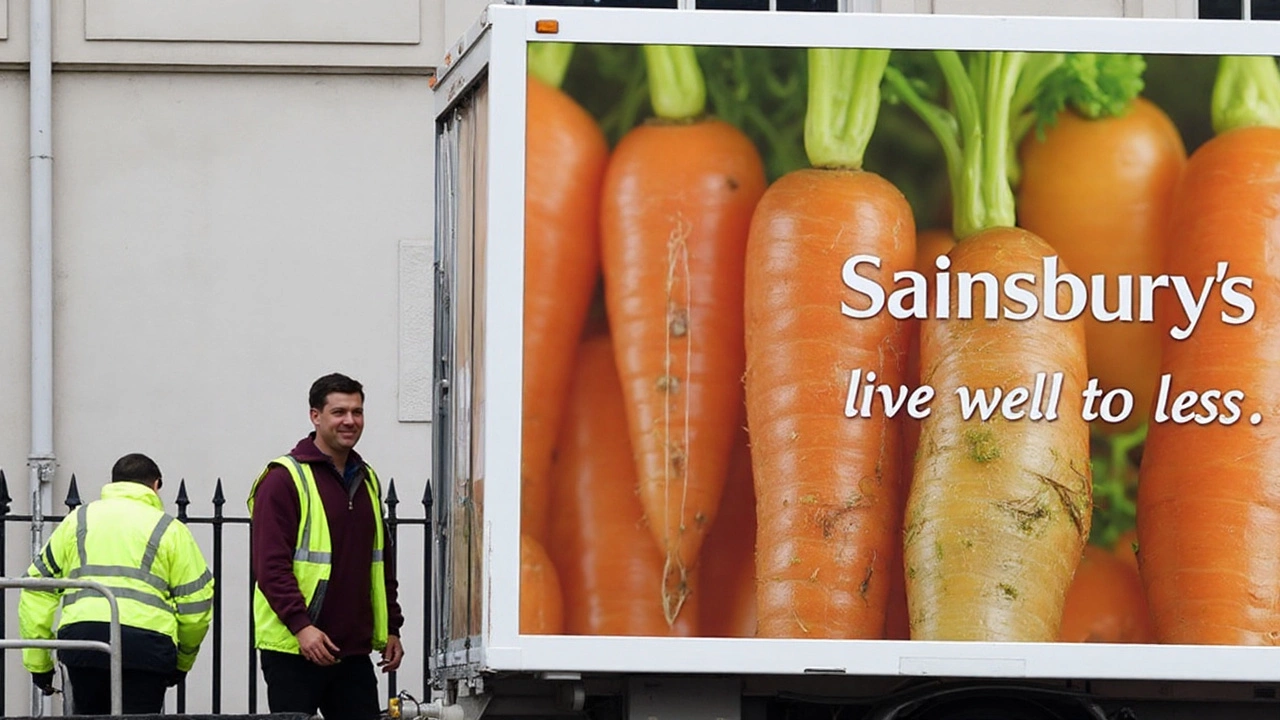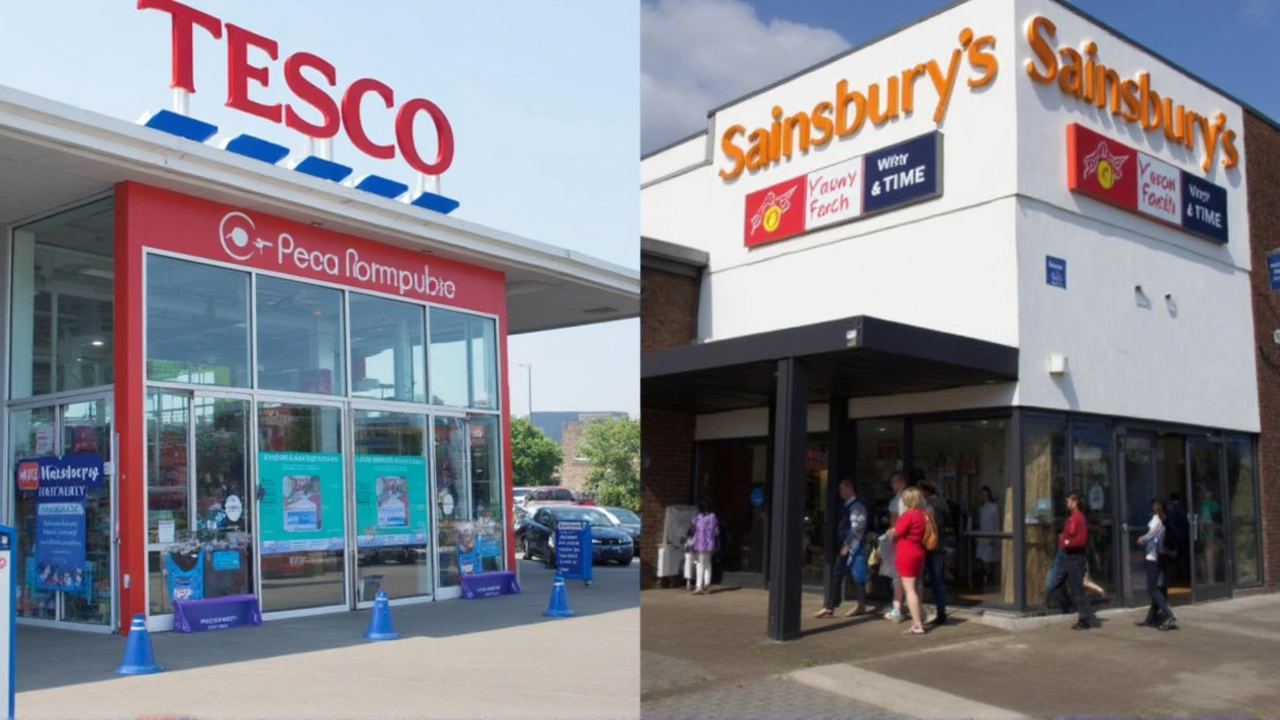Card declines hit doorstep orders as Sainsbury's works with Visa and Barclays
For a slice of online shoppers on Wednesday, grocery deliveries ran into an awkward last step: cards declined at the moment of payment. Sainsbury's said a technical issue with one of its payment providers interfered with processing some online orders, prompting a flurry of failed transactions just as drivers tried to complete deliveries.
The supermarket stressed there was no cyberattack. Its website and app kept running as normal, and stores traded as usual. Early attention turned to Visa after customers reported card failures. Visa, though, said its systems were operating normally and that it was working with partners to investigate. By later in the day, the problem was traced to Barclays, which acknowledged a limited technical issue that led to some declines on orders due to be paid upon delivery. Barclays said the fault was resolved quickly.
That sequence matters. Payments for online groceries are more complex than a simple one-off purchase. Supermarkets often take a pre-authorisation at checkout and finalize the charge when the order is packed and delivered, because weights and substitutions can change the total. A hiccup at the moment the final capture is requested—especially if it involves the acquiring bank or the gateway—can cause declines even if the card network and the retailer’s systems are healthy.
Sainsbury’s said it was working with both Visa and Barclays to restore normal service. The disruption was temporary and affected a subset of online customers whose cards were charged when the driver arrived or when the order left the store. For shoppers, that translated into declined payments, potential delays, and in some cases abandoned deliveries.

Why it happened, who it hit, and what it says about retail’s risk profile
Modern retail payments rely on a chain: the cardholder’s bank, the card network, the merchant’s payment gateway, and the acquiring bank that processes transactions. If one part stumbles—like a timeout or configuration error at the acquirer—perfectly valid cards can suddenly fail. That appears to be what happened here. Visa reported no platform incident. Barclays later accepted that a limited issue on its side caused certain online orders to be declined, specifically those paid on delivery.
Because grocers settle the final amount at dispatch or at the doorstep, these transactions are sensitive to split timing and re-authentication rules. Under Strong Customer Authentication (SCA), some orders may need extra checks through 3‑D Secure. If a provider’s system cannot complete those checks or approve the final capture, the merchant gets a decline and the driver can’t hand over the goods. That’s frustrating for customers and costly for retailers, who then have to rebook slots, restock chilled items, and field support calls.
The timing of the glitch came as UK retail remains jumpy about cyber risk. This wasn’t a hack, but the industry has been on edge after recent attacks on major names. Marks & Spencer has warned the attack it suffered will cost it at least £300m and forced it to halt online orders for months. The Co‑op faced weeks of disruption to the in‑store availability of thousands of products. Harrods has also dealt with cyber incidents. Even when the cause is a plain technical fault, shoppers now assume the worst—and brands have to move fast to show data is safe.
For Sainsbury’s, the immediate job was to stabilize payment flows and keep customers informed. When doorstep payments fail, drivers may try the card again, switch to another card, or contact support. If none of that works, orders can be taken back to the store and rescheduled. In the background, the retailer has to unwind any pending authorisations, reconcile stock movements, and make sure customers aren’t left with duplicate holds on their accounts.
Here’s what affected customers can do if they were caught up in the glitch:
- Check your banking app for any pending transactions from the original order. Pending holds typically drop off automatically within a few days if the order didn’t complete.
- If you rebooked and paid again, keep the new confirmation and watch for the old authorisation to clear. Contact support if a pending hold sticks beyond your bank’s standard timeframe.
- Keep delivery emails and any messages from the driver. They help customer service reconcile what happened at the doorstep.
- If you were charged incorrectly, request an adjustment or refund. Supermarkets usually finalise charges only once the delivery is completed and the items are confirmed.
In payments terms, this was a classic “last-mile” processing snag. The merchant storefront worked. The card network says it ran normally. The failure point sat with a provider in the acceptance chain, and it showed up only on a specific transaction type—orders where the final amount is captured later. That’s why shoppers who paid in full upfront or used different timing might not have noticed anything.
Episodes like this are a reminder that resilience isn’t only about defending against attackers; it’s also about building redundancy across providers. Some retailers keep multiple acquiring routes so they can fail over if one provider has an outage. That comes with cost and complexity but can spare them a bad afternoon when the tills (or delivery tablets) go silent.
For the payments companies, the incentive is just as clear. Grocery is a high‑volume, thin‑margin business that expects approvals to be near‑instant and near‑universal. A short-lived outage can snowball into missed slots, spoiled perishables, and compensation costs. It also clogs call centres for days after, as customers chase refunds or ask why a pending hold is still showing.
By Wednesday evening, the situation had eased after Barclays fixed the underlying issue. Visa continued to report normal operations. Sainsbury’s said its online grocery service was available and that teams were monitoring performance with partners. The retailer will review the incident with its providers, but for customers the message is simple: your data wasn’t breached, the glitch was technical, and pending holds should clear without you needing to do anything.
Still, the story doesn’t end when systems recover. Trust is emotional, and payments are invisible until they fail. Retailers are likely to keep pressing their providers for clearer status dashboards, better failover, and faster customer messaging when things go sideways. That’s the price of running a just‑in‑time grocery network where the moment that matters is the one when a driver hands over the bag and the card machine says “approved.”

